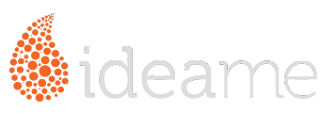Utrecht, 12/19/2011 – Martijn Arets, author of the book "Brand Expedition, a 5-‐month journey visiting Europe's most inspiring brands", has collected € 20,000 in investments from the general public, via investment platform Symbid. The investments will be used to translate the successful Dutch version of the book in English and bring it on the international market. Arets used Symbid's investment platform to reach the general public. Special about this transaction is that all investor actually become shareholders in the company of Arets.
Arets needed 2 months to reach his capital goal. In total, 171 investors, domestic and foreign, responded to the call. The English translation of the book is expected in February 2012 and will be available on the website (as EBook or hardcopy) of the author and via regular channels. The translation will gain familiarity with a unique promotional action, in which 1000 fans from 15 countries read a chapter from the book in front of the webcam making it the first read out loud book in the world on YouTube. Arets is very pleased with the result: "The past two months I have not only gained the necessary investment, but also an additional chapter to the story, overwhelming media attention and 171 Brand Expedition ambassadors.“
The investment platform Symbid demonstrates with this transaction that its approach to finance entrepreneurs and businesses works, says CEO, Korstiaan Zandvliet. "With this first successful financing, we proved that the platform works! We would therefore like to congratulate Martijn and all investors with this fantastic result."
About Symbid
Symbid is the first investment platform where investors can directly invest from as little as € 20,-‐ in the equity of start-‐ups or existing businesses. Any entrepreneur is able to achieve growth or to raise capital via Symbid. Symbid recently reached the finals of the Shell Live Wire Award and is among the most innovative companies in the Netherlands.
About Martijn Arets and Brand Expedition
From Brand Expedition Martijn advises and inspires people and organisations in the areas of brand, strategy, entrepreneurship, innovation, new business models and social media. He does this through presentations, brainstorming sessions and consultancy. His book Brand Expedition was recently nominated by Sprout for the title of ABN AMRO Business Book of the Year.
For more information
www.symbid.com www.brand-‐expedition.eu
Arets needed 2 months to reach his capital goal. In total, 171 investors, domestic and foreign, responded to the call. The English translation of the book is expected in February 2012 and will be available on the website (as EBook or hardcopy) of the author and via regular channels. The translation will gain familiarity with a unique promotional action, in which 1000 fans from 15 countries read a chapter from the book in front of the webcam making it the first read out loud book in the world on YouTube. Arets is very pleased with the result: "The past two months I have not only gained the necessary investment, but also an additional chapter to the story, overwhelming media attention and 171 Brand Expedition ambassadors.“
The investment platform Symbid demonstrates with this transaction that its approach to finance entrepreneurs and businesses works, says CEO, Korstiaan Zandvliet. "With this first successful financing, we proved that the platform works! We would therefore like to congratulate Martijn and all investors with this fantastic result."
About Symbid
Symbid is the first investment platform where investors can directly invest from as little as € 20,-‐ in the equity of start-‐ups or existing businesses. Any entrepreneur is able to achieve growth or to raise capital via Symbid. Symbid recently reached the finals of the Shell Live Wire Award and is among the most innovative companies in the Netherlands.
About Martijn Arets and Brand Expedition
From Brand Expedition Martijn advises and inspires people and organisations in the areas of brand, strategy, entrepreneurship, innovation, new business models and social media. He does this through presentations, brainstorming sessions and consultancy. His book Brand Expedition was recently nominated by Sprout for the title of ABN AMRO Business Book of the Year.
For more information
www.symbid.com www.brand-‐expedition.eu

















